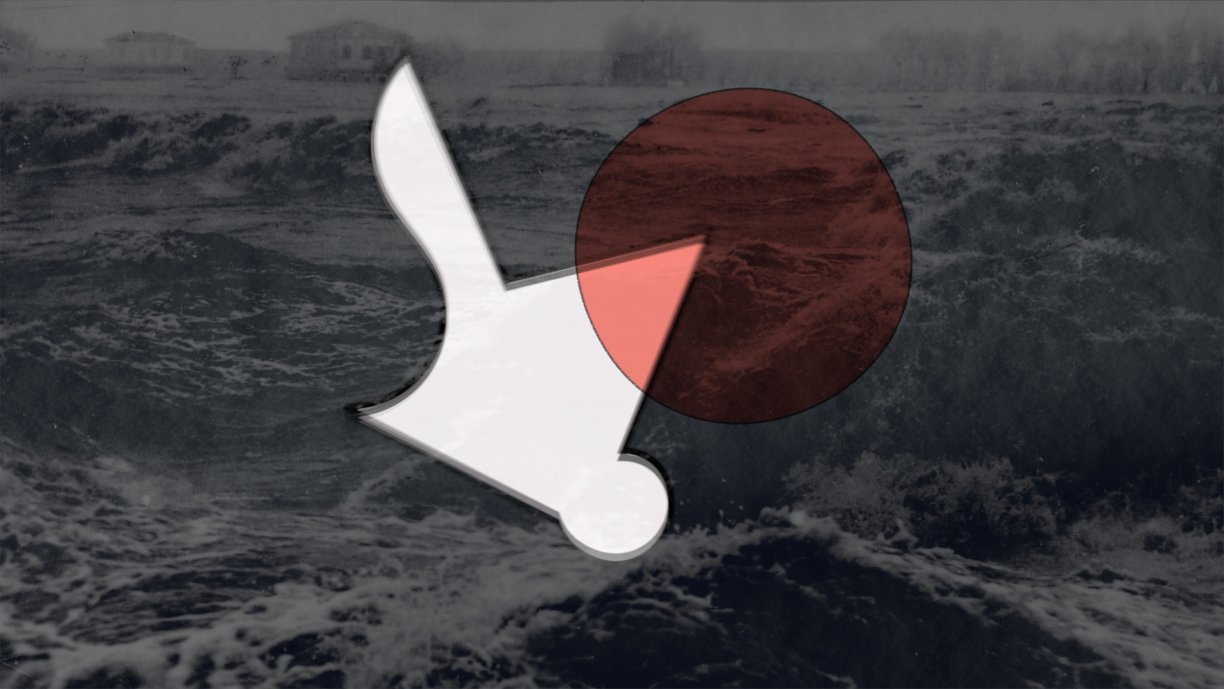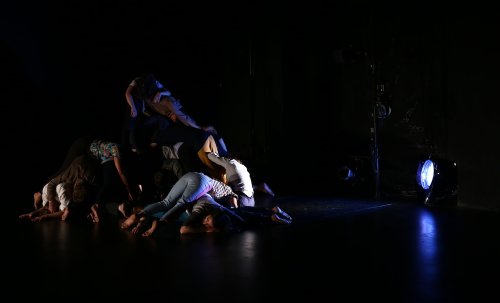I can't imagine— even in a court of law— where they can find the fine thread of deviation— where the master dyers' sabotage is legal and the worker's sabotage illegal, where they consist of identically the same thing and where the silk remains intact.
—Elizabeth Gurley Flynn, 1916
Evan Calder Williams’ final presentation as an ISSUE Project Room Artist-In-Residence, A Fine Thread of Deviation is a collaborative textile, video, sonic, and linguistic work that centers on the intersections between a screen and its projection and on the unseen gestures that vanish into the surface of images they create. At its heart is a projection screen woven on a loom by Anne Low and with a pattern co-designed by Low and Williams. This screen and its pattern forms the structure of the video and sound work shot and assembled by Williams, less a film than an animated graphic composition that draws from the histories of weaving, capitalism, technical systems, and landscape.
Including an original composition by guitarist Marisa Anderson and incorporating constrained writing and abstract cartoons that decompose frame by frame, the work refuses a single mode, method, or explanatory thesis. It takes its title from IWW organizer Elizabeth Gurley Flynn, who in 1916 wrote in defense of alleged textile saboteur Frederick Sumner Boyd that only a “fine thread of deviation” separates the normal degradation of materials condoned by industry from that covertly pushed by they who seek to ruin such industry and its social forms. Pursuing this minor gap between the plan, the conspiracy, the glitch, and the willful mistake, the work follows this “fine thread” across scattered histories, styles, and technologies to give image to the enormous set of gestures, accidents, and knowledge embedded in the thick surfaces of the easily ignored.
Organized by Lawrence Kumpf.
Evan Calder Williams is an artist, writer, and theorist. He has presented solo and collaborative films, performance, and audio works at the Serpentine Gallery, the Whitney Museum, Tramway, Artists Space, Images Festival, ISSUE Project Room, Frieze Film, the Ljubljana Biennial of Graphic Arts, and the Montreal International Festival du Nouveau Cinéma. He works, with Lucy Raven and Vic Brooks, as Thirteen Black Cats, a research and production collective for moving images. He received a PhD in Literature from the University of California Santa Cruz and was a Fulbright Fellow in Italy for his research on cinema, industry, and revolt. He is the author of Combined and Uneven Apocalypse and Roman Letters, as well as two forthcoming books, Shard Cinema and Donkey Time. His writing has appeared in Film Quarterly, Mute, The Journal of American Studies, World Picture, Radical Philosophy, Third Rail, Criterion Collection, The New Inquiry, and elsewhere. He teaches theory at the Center for Curatorial Studies at Bard College.
Anne Low is based in Vancouver, Canada. Solo exhibitions include Some Rugs and Blankets, The Taut and the Tame, Berlin, 2012 and Women's Assembly: Two Scenes from a Radio Play, Hex Projects, London, 2008. Her work was included in the group exhibition Reading the Line at The Western Front, Vancouver in 2015. She has collaborated with The Grantchester Pottery as part of The Grantchester Pottery Paints the Stage, Jerwood Space, London, 2015; ARTIST DECORATORS, ICA, London, 2013 and Studio Wares, David Dale Gallery, Glasgow, 2013. Her weavings made in collaboration with Gareth Moore were shown as part of his work A place, near the buried canal for dOCUMENTA 13, Kassel, 2012.





